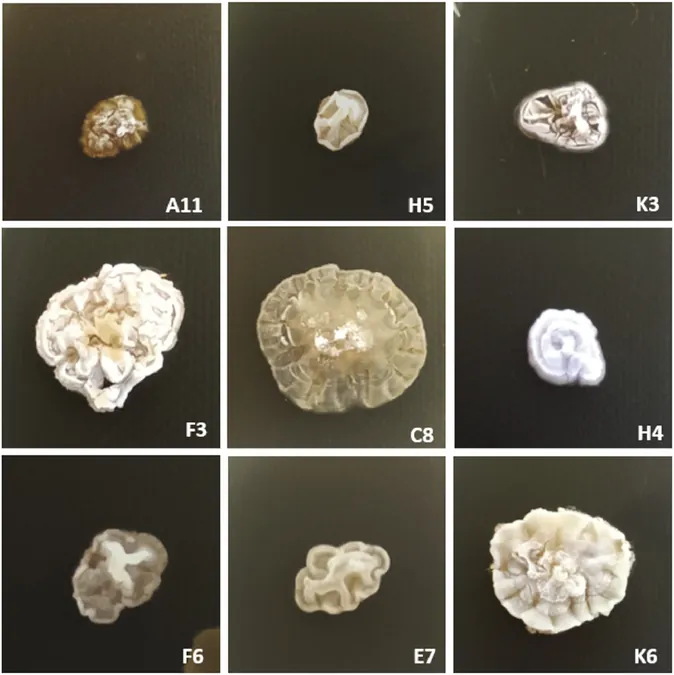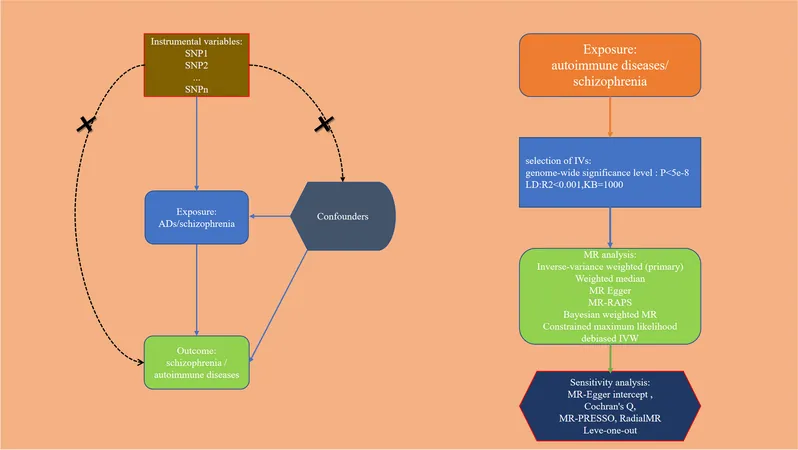
Antarctic Microorganisms Unleash Revolutionary Biocontrol Potential Against Banana Wilt Crisis!
2024-11-15
Author: Yu
Introduction
A groundbreaking study by scientists at ESPOL has revealed astonishing biotechnological potential in the harsh wilderness of Antarctica, where life thrives against all odds. By sampling 162 cultures from this remote continent, researchers isolated 77 distinct microbial strains, predominantly showcasing the resilient actinomycetes, which made up a staggering 66.23% of their findings.
Microbial Diversity and Ecosystem
The rigorous sampling conducted at the Great Wall and Henryk Arctowski stations highlighted a diverse microbial ecosystem, particularly in areas lush with mosses and lichens. These regions, rich in organic matter, seemingly offer an ideal environment for microbial proliferation. The study's findings have been documented in the esteemed journal, Biotechnology Reports, generating immense excitement in the scientific community.
The Banana Industry Crisis
Bananas stand tall as one of the world's most vital crops, with Ecuador at the forefront, exporting an impressive 25% of the global market. However, the banana industry now faces a daunting adversary: the insidious fungus Fusarium oxysporum f. sp. cubense, specifically its notorious Tropical Race 4 (TR4) strain. This formidable pathogen targets the Cavendish variety—the world’s most commonly cultivated banana—and wreaks havoc in the plant's vascular system, inevitably leading to its demise. Alarmingly, the fungus can linger in the soil for years, complicating eradication efforts.
Despite Ecuador's diligent attempts to implement stringent phytosanitary measures, a multifaceted approach blending genetic improvements with innovative crop management strategies is crucial for sustainable solutions.
Antarctic Bacteria: The Game-Changers in Biocontrol
In the race to discover sustainable alternatives for crop protection, researchers analyzed the antifungal properties of 21 isolated actinomycete strains. Excitingly, 41.18% of these strains showcased the formidable ability to inhibit the growth of Fusarium oxysporum. Among these warriors, two strains emerged as champions: *Streptomyces polyrhachis* (K6) and *Streptomyces fildesensis* (E7), both isolated from the Escudero and Great Wall stations. These strains demonstrated extraordinary antifungal prowess, with half-maximal inhibitory concentration (IC50) values of 614.12 AU/mL and 280.83 AU/mL, respectively, signaling their vast potential as biocontrol agents against this relentless fungus.
But there's more! The culture broths from these strains are a treasure trove of bioactive compounds capable of entirely stunting the growth of Fusarium oxysporum at elevated concentrations. Tests leveraging the AlamarBlue reagent unveiled a dramatic reduction in fungal cell viability, particularly effective with bioproducts sourced from strains K6 and E7. What’s particularly alluring is that these compounds remain stable at room temperature and require no special storage—ideal characteristics for tropical cultivation environments.
Through advanced molecular identification via 16S rRNA gene sequencing, researchers found that strain K6 shares 96.98% similarity with *Streptomyces polyrhachis*, while strain E7 boasts a remarkable 99.4% similarity to *Streptomyces fildesensis*. The unprecedented identification of *S. polyrhachis* in the icy realms of Antarctica marks a revolutionary leap in biotechnology.
Towards a Sustainable Future in Pest Control
This groundbreaking discovery spotlights the critical role of extreme environments in unveiling innovative biotechnological solutions. The Antarctic actinomycetes hold the promise of transforming disease management practices in the banana industry, potentially slashing dependence on harmful pesticides and fostering a greener agricultural approach.
As research advances, a renewed hope emerges for combating diseases like fusarium wilt, vital to safeguarding banana production globally. The development of bioproducts derived from these remarkable Antarctic microorganisms promises to revolutionize agricultural practices, offering dual benefits to both producers and the environment. The future of crop protection may very well lie in the icy grasp of Antarctica—who would have thought?


 Brasil (PT)
Brasil (PT)
 Canada (EN)
Canada (EN)
 Chile (ES)
Chile (ES)
 España (ES)
España (ES)
 France (FR)
France (FR)
 Hong Kong (EN)
Hong Kong (EN)
 Italia (IT)
Italia (IT)
 日本 (JA)
日本 (JA)
 Magyarország (HU)
Magyarország (HU)
 Norge (NO)
Norge (NO)
 Polska (PL)
Polska (PL)
 Schweiz (DE)
Schweiz (DE)
 Singapore (EN)
Singapore (EN)
 Sverige (SV)
Sverige (SV)
 Suomi (FI)
Suomi (FI)
 Türkiye (TR)
Türkiye (TR)